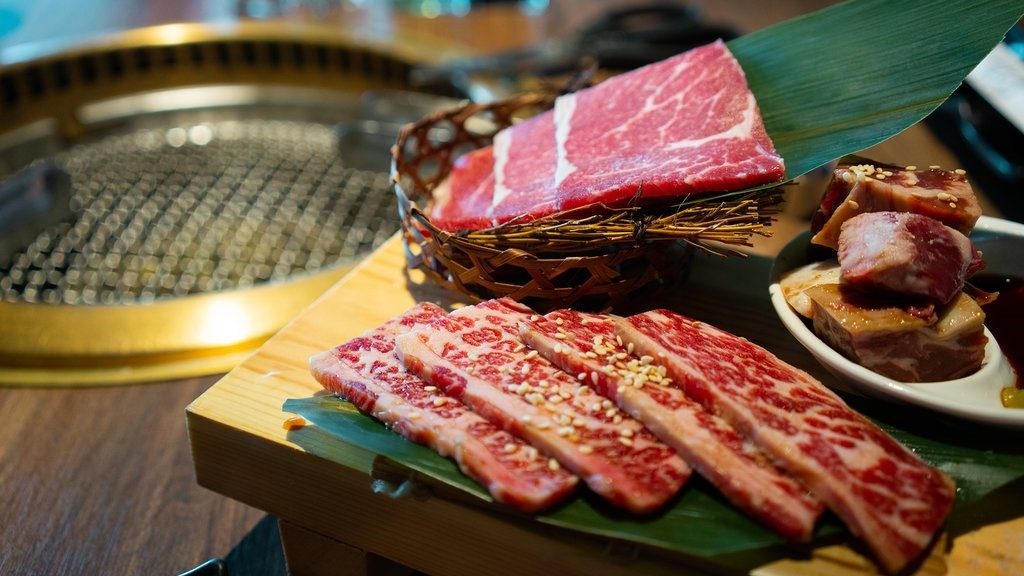Gyu Yakiniku is a Japanese dish which uses a unique sauce to marinate the meat for grilling. In many parts of the world, yakiniku is also known as “Japanese barbecue”. Yakiniku restaurants can be found all over Japan.
Raw ingredients such as meat and seafood will be served while diners will cook them on a grill set on the table. The All Japan Yakiniku Association proclaimed 29 August as official “Yakiniku Day” in 1993 as the date can be read as ya-(tsu)ki-ni-ku.
What is Gyu Yakiniku?
Yakiniku is the Japanese word for “grilled meat.” Yaki means grilled and niku is meat. This term can be used to describe grilling or style of cooking meats, which means that the meat is marinated and then cooked on an open-flame grill in the Japanese style. All types of meats can be used to make the dish such as chicken drumsticks, beef slices (Kobe and short ribs), squids, scallops, lamb and many more.
Yakiniku sauce is unique to each establishment as all yakiniku shops make their own type of yakiniku sauce. Nevertheless, you can find yakiniku sauce in supermarkets in Japan. Basically, it consists of soy sauce, mirin, sugar, sesame oil, garlic, anda secret ingredient the shop adds to make their sauce stand out. The resulting sauce is a sweet and salty thick sauce that is used as a dipping sauce at yakiniku restaurants. The same sauce can also be used for marinating the meat.
The grill used to grill the meat affects the texture of the meat. Some restaurants will have gas grills, some charcoal, while some use ceramic grills depending on what kind of texture you prefer. Usually, you can grill on your own in restaurants, but some high-end yakiniku restaurants will insist on cooking it for you. In Japanese culture, the youngest adult in a party will do most of the grilling, and the meat off the grill will be given to the eldest.
History of Gyu Yakiniku
This Japanese style barbeque is said to be influenced by Korean dishes like bulgogi and galbi. Yakiniku became widespread across Japan after the Second World War. Ventilated barbecue systems were introduced by Shinpo Co., Ltd. in March 1980, which increased the spread of yakiniku throughout Japan. This is because the new ventilated system enables diners to eat yakiniku in a smoke-free environment.
In 1991, due to the easing of beef import restrictions, there was a drop in price for beef cuts, leading to the boosted popularity of yakiniku. Then, the trend diminished in 2001, when mad cow disease began spreading across Japan.
All You Can Eat vs Order by the Plate
In Japan, there are two versions of yakiniku restaurants, which is the all-you-can-eat and those that order by the plate. Tabehodai means all you can eat in Japanese. Most yakiniku restaurants with this option will have their own tiered menu where certain meats are available at different price levels. Besides, you get the same time you get 90 minutes to eat as much as possible.
Ordering by the plate is where you have the option to choose the cut of meat and a quantity — and pay for precisely what you ordered. This option definitely has a better quality of meat to choose from, which includes Wagyu beef too.
Where to find Gyu Yakiniku in Malaysia
Gyu Yakiniku can be found in some yakiniku speciality restaurants in Malaysia. You can find them at Tokyo Yakiniku (Kuala Lumpur) and Bentoya (Kuala Lumpur).
Find more of Japanese Cuisine on foodpanda!
